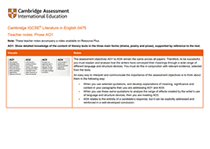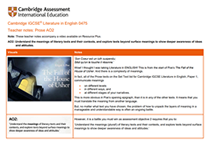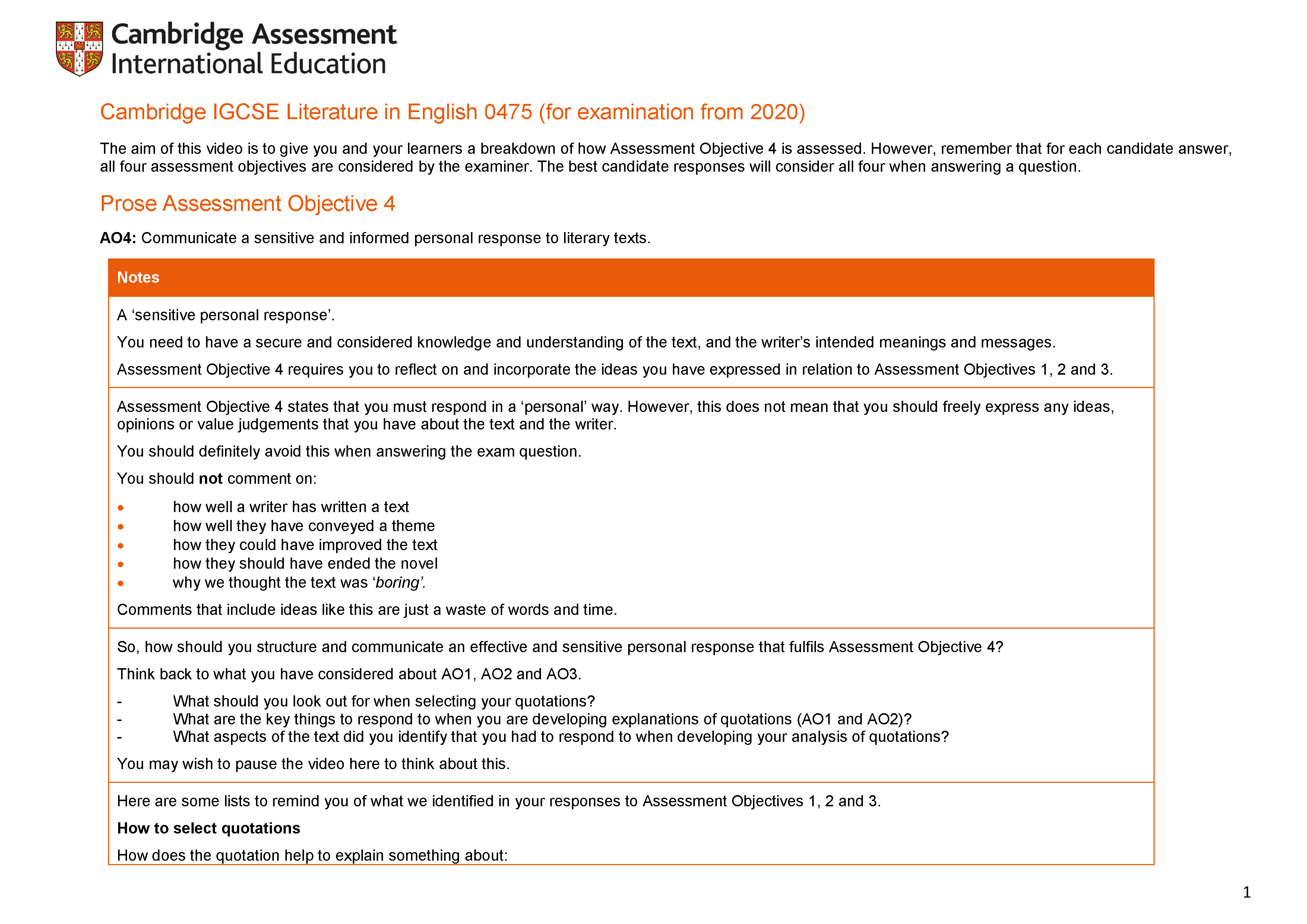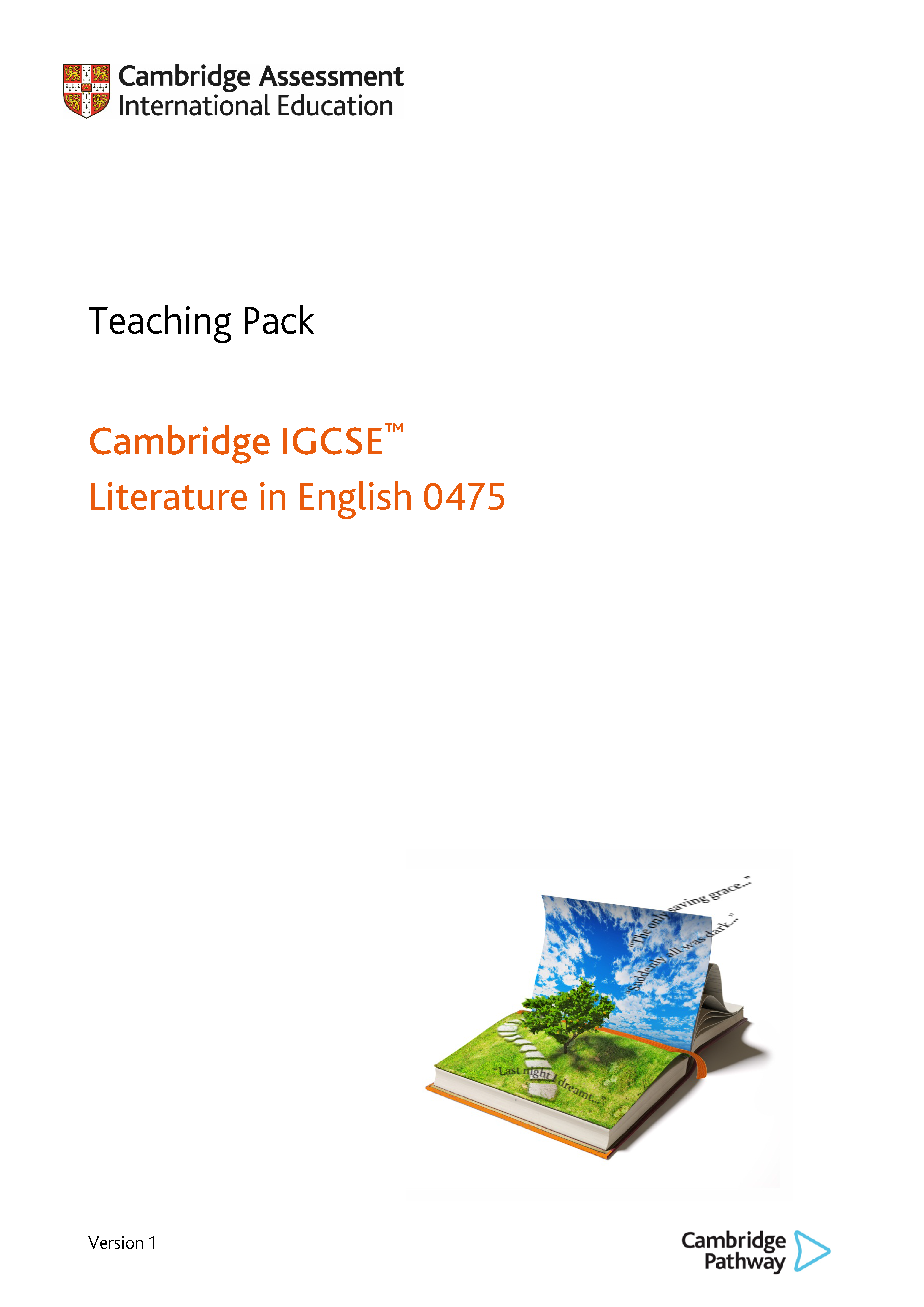The assessment objectives AO1 to AO4 remain the same across all papers. Therefore, to be successful, you must explain and analyse how the writers have conveyed their meanings through a wide range of different language and structure devices. You must do this in conjunction with relevant evidence, selected from the texts.
An easy way to interpret and communicate the importance of the assessment objectives is to think about them in the following way:
- When you use selected quotations, and develop explanations of meaning, significance and context in your paragraphs then you are addressing AO1 and AO2
- When you use these same quotations to analyse the range of effects created by the writer’s use of language and structure devices, then you are meeting AO3
- AO4 relates to the entirety of a candidate’s response, but it can be explicitly addressed and reinforced in a well-developed conclusion.
Each paper (or text studied) presents different opportunities for you to satisfy all four assessment objectives.
The examiner expects candidates to include slightly different things in their responses to Prose, Poetry, Drama and Unseen texts. This is because Prose, Poetry and Drama are written very differently, and communicate layers of meanings in different ways.
- In poetry you have a wide range of structural devices to draw upon which are absent in Prose
- In drama you can consider and discuss the use of stagecraft in your responses
- In Prose, the narrative style is an important element that can be different from techniques used in Drama and Poetry texts
You must be aware of this to investigate and practise how to comment upon the writers’ use of different devices to create a variety of effects across the set texts you are studying.
Let’s focus on AO1 more explicitly and think about what counts and what does not count as ‘detailed knowledge of the content of literary texts’ in Prose.
Perhaps it would be helpful to begin with what does not count. This will help ensure that you avoid any slips, trips or falls in your responses!
As a general rule, always remember that you are studying Literature, and writing Literature essays – not historical, scientific or geographical ones.
Lengthy personal interpretations of how the themes and messages of the text that are apparent in our modern world (or in the past) should also be avoided.
These ideas do not match the assessment objectives, and are not included in the mark scheme. If you include such comments then you are wasting words, and time in the examination.
Many candidates make the mistake of including a biographical account of the writer in their essay, or a lengthy account of what it was like to live in the period that the text was written.
Details of events or circumstances in a writer’s life that are directly significant to the text can be briefly included in the introduction and conclusion, but only when the text revolves around such a highly personal and specific event. Often this is more applicable in poetry than prose.
So what counts as ‘detailed knowledge of the content of literary texts’ in Prose?
In your responses, you should show an in-depth knowledge of the text by explaining meanings and their significance, in relation to this list.
‘contexts’ from AO2 should also be remembered. This list should be commented upon in terms of the context of the question in other words, what the question is asking the learners to focus on, and the context of where they come in the novel itself.
Which part of the text is being considered?, and
How that part relates to the whole of the story?
The word contexts is also important as it reminds you that you must respond to the text by showing an awareness of the writer’s intended meanings. You should also have a detailed knowledge of the messages and ideas the writer is conveying in relation to the text as a whole, and in relation to the different parts of it, too.
So, how can you satisfy AO1 in your essay responses, while observing a relevant focus that will also meet AO2? It sounds difficult but it really isn’t.
You can do this in a number of ways starting with the introduction of your response. Here is how you can make an introduction effective:
Firstly, ensure that it is not too long. You should use your introductions to show that you have a good understanding of the text (and the passage being analysed if it is a passage-based question that you are responding to). Therefore, three to four lines will be sufficient.
In these three to four lines, it is a good idea to try and develop a brief summary of the events and themes of the text
Ok, let’s look at 1984 by George Orwell.
Here is what an introduction to an answer on a passage-based question could look like.
The passage is taken from Chapter 1 of the novel. The question is:
Explore how Orwell conveys feelings of chaos and fear in the following passage.
Have a look at the example answer.
Let’s think about how you can satisfy AO1 in the main body of an essay response.
It is important that you maintain a high quality of explanations throughout your responses, and support your ideas with relevant evidence to exemplify and support your ideas. After all, the full AO1 includes ‘supported by reference to the text.’
However, selecting relevant evidence can often be difficult. To help you achieve this, let’s look at these questions and use them as a checklist.
Do you understand what the quotation means?
Does the quotation help you answer the question?
How does the quotation help you to explain something about character, events, themes, setting and/or atmosphere in relation to the question?
Does the quotation contain interesting vocabulary choices and/or imagery that will help to explore the different effects the writer has created?
You have 45 minutes to respond to the Prose question and you should aim to use at least six or seven quotations form the whole text to answer the essay question. Make sure these are phrases or sentences rather than words.
You have selected evidence to answer the essay question, so what does a supported explanation of meaning and content look like?
Here is an example. It is in response to the same passage and question you considered for the introduction.
To what extent do you think this response satisfies AO1 and AO2?
Can you spot where the candidate has responded to the surface meaning, but then elaborated on them to explore the hidden and figurative meanings contained in the quotation?
Pause the video to allow some thought about these questions. You could look at the mark scheme and consider what mark this paragraph should get, and why?
If you refer to the mark scheme you will note that this paragraph merits a Level 8 mark as it:
This response incorporates well-selected reference to the text skilfully (AO1). The quotation contains what seem like a straightforward description, but in actual fact you know that these images metaphorically to how Winston feels at the start of the text. It also demonstrates detailed knowledge of the text.
Sustains a critical understanding of the text showing individuality and insight (AO2). The candidate shows an understanding of the surface and hidden/ figurative meanings of the quotation by explaining the significance of events and setting.
Responds sensitively and in considerable detail to the way the writer achieves his effects (AO3). The candidate explores how the writer’s use of language creates effects on the reader by discussing character, setting and atmosphere.
Sustains personal and evaluative engagement with the task and text (AO4). The candidate evaluates ideas in relation to the essay question and supports ideas with detailed reasons.
Using example paragraphs like this in conjunction with the mark scheme can be a very useful activity. You can evaluate the strengths and weaknesses of responses so that you know how to demonstrate a ‘detailed knowledge’ and support ideas with references from the text. It can also help you to understand how to meet the other assessment objectives.
For example, if you can understand the difference between a Level 4, a Level 6 and a Level 8 response (and explain why) then you will have a good understanding of what you must do.



 Prose AO1 video transcript
Prose AO1 video transcript



